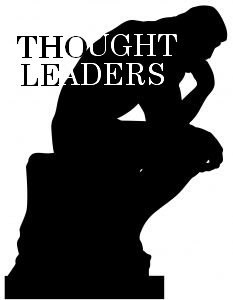[vc_row][vc_column width=”1/1″][vc_column_text]
 Rob Greenlee has been working with podcasts since 1999, as a content creator and manager of large podcast directories. He is currently content manager for podcasts in Windows Phone, the latest role in a long series of positions with Microsoft. Greenlee has also managed podcasts for the Zune marketplace, and for Xbox.
Rob Greenlee has been working with podcasts since 1999, as a content creator and manager of large podcast directories. He is currently content manager for podcasts in Windows Phone, the latest role in a long series of positions with Microsoft. Greenlee has also managed podcasts for the Zune marketplace, and for Xbox.
As a producer, Rob is co-host of The New Media Show, a video podcast about the business of podcasting.
We spoke with Rob Greenlee about The New Media Show, and the business of podcasting generally.
[/vc_column_text][/vc_column][/vc_row][vc_row][vc_column width=”1/1″][vc_separator][vc_column_text]
RAIN: The New Media Show is a podcast about podcasts. How meta!
[/vc_column_text][/vc_column][/vc_row][vc_row][vc_column width=”2/3″][vc_column_text]
Yeah, it’s been my career, helping folks who are creating content, helping them build their shows in the podcast space. It’s something I’ve been doing for a few years.
We livestream The New Media Show on YouTube, and also make the show available as an audio and video podcast. Our topics are very much like what we’ll be talking about on the RAIN Summit NYC panel. On The New Media Show we talk about podcasting, live-stream video, monetization — it’s a fairly technical show, not really a consumer show.
Todd Cochrane is the co-host. Todd is the CEO of RawVoice. He runs Blubrry, a hosting platform for podcasts. He also makes a WordPress plugin called PowerPress, a default for podcasters to use in the WP system. He’s got a network of 5,000 podcasts that he sells advertising to. Podcasting is a pretty small industry. There are a lot of content people, and some new networks that have come up. But there is a core of about 10 people who are really behind a lot of what’s going on.
Radio seems to be moving toward podcasts — TuneIn, for example. I talk to their people to know what they’re trying to do. The iHeartRadio folks are getting into podcasting.
[/vc_column_text][/vc_column][vc_column width=”1/3″][vc_single_image image=”3206″ img_link_target=”_self”][vc_separator][vc_column_text]“Podcasting is a pretty small industry. There are a lot of content people, and some new networks that have come up. But there is a core of about 10 people who are really behind a lot of what’s going on.”[/vc_column_text][vc_separator][vc_column_text]“Radio seems to be moving toward podcasts.”[/vc_column_text][/vc_column][/vc_row][vc_row][vc_column width=”1/1″][vc_separator][vc_column_text]
RAIN: Is specialty programming more effective than category programming? And if so, is that what’s fueling the revival of podcasting?
[/vc_column_text][/vc_column][/vc_row][vc_row][vc_column width=”2/3″][vc_column_text]
I think it is. Broadcast radio is not catering to all the needs of the audience. Niche programming is what people want. There are a lot of broadcast radio shows that are three hours long, but three-hour shows don’t do well as podcasts. So there’s a paradigm shift happening. It’s not unlike what’s happening on TV. People tune into shows, not networks or channels. The big challenge is ease of access, and cutting through the clutter to find what’s relevant to you, the listener.
The industry is challenged by metrics and reporting around advertising. That isn’t standardized yet. The podcast market is fragmented. [Developing standards] is like trying to corral stray cats. Everyone does their own thing, sells their own shows, using different standards for metrics. Some of the advertisers who are looking at this are confused. They see different numbers from different people. That’s one big challenge.
There are three or four major players that are vying for that mantle of [providing] the standard method. Key podcast players are trying to decide where to hang their hat, where to say, “These stats are accurate.” We need numbers we can take to ad agencies in New York, with a level of comfort and trust.
[/vc_column_text][/vc_column][vc_column width=”1/3″][vc_single_image image=”3207″ img_link_target=”_self”][vc_separator][vc_column_text]“Broadcast radio is not catering to all the needs of the audience. Niche programming is what people want.”[/vc_column_text][vc_separator][vc_column_text]“People tune into shows, not networks or channels.”[/vc_column_text][vc_separator][vc_column_text]“The podcast market is fragmented. Developing standards is like trying to corral stray cats.”[/vc_column_text][/vc_column][/vc_row][vc_row][vc_column width=”1/1″][vc_separator][vc_column_text]
RAIN: Is podcasting a big enough market for advertisers?
[/vc_column_text][/vc_column][/vc_row][vc_row][vc_column width=”2/3″][vc_column_text]
It’s getting there. It’s all going to be driven by content. The content providers are starting to get a grasp of what people want, and the listening platforms are getting easier for people to use. Those are all aspects of scaling. More of the music and live-streaming platforms like TuneIn are starting to get into the space. I’ve heard that even Pandora — their audience has been asking for spoken-word content for a long time, and that Pandora has been holding off because it’s not their core. But I think in the end we may see that. Podcasting might come to Pandora in a few years.
The scale is there now for companies to monetize. Look at Norm, at PodcastOne. He’s got a stable of 200 shows that are doing 100-million downloads. From that perspective, it’s a pretty reliable market right now, albeit not at the level of what he did with Westwood One, mainly because of the ad level. You can’t advertise as much in podcasts as you can on the radio. And you shouldn’t because listeners can easily tune out and go to something else. that’s a challenge for podcasting; you can’t run many ads.
What you typically see with podcast advertisers is that they are consistent. They realize that success comes from a long-term strategy, not by advertising for two weeks and getting out. It’s something that builds over time with audiences. And there is a delayed response function. The advertisers who use a direct response strategy, like a promo code, find that users will use the code many weeks after receiving it. It steamrolls for them over time.
[/vc_column_text][/vc_column][vc_column width=”1/3″][vc_single_image image=”3208″ img_link_target=”_self”][vc_separator][vc_column_text]“It’s all going to be driven by content.”[/vc_column_text][vc_separator][vc_column_text]“Podcasting might come to Pandora in a few years.”[/vc_column_text][vc_separator][vc_column_text]“You can’t advertise as much on podcasts as you can on radio.”[/vc_column_text][/vc_column][/vc_row]
